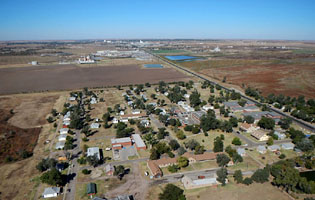
| J.S. and S.W. Aber |

| J.S. and S.W. Aber |
Permanent stone buildings were constructed during the next two years from locally available sandstone. Lt. George A. Hesselberger was in charge of this project which employed 60 tempsters and 200 mules to haul the stone (Fort Dodge 2014). Many of these buildings still remain in various states of repair. However, the Arkansas River that once flowed full is now dry most years.
Return to airphoto gallery
or Great Plains airphoto homepage.
All text and images © by the authors (2016).